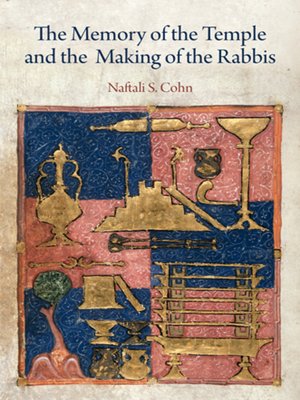The Memory of the Temple and the Making of the Rabbis
ebook ∣ Divinations: Rereading Late Ancient Religion
By Naftali S. Cohn

Sign up to save your library
With an OverDrive account, you can save your favorite libraries for at-a-glance information about availability. Find out more about OverDrive accounts.
Find this title in Libby, the library reading app by OverDrive.



Search for a digital library with this title
Title found at these libraries:
| Library Name | Distance |
|---|---|
| Loading... |
When the rabbis composed the Mishnah in the late second or early third century C.E., the Jerusalem Temple had been destroyed for more then a century. Why, then, do the Temple and its ritual feature so prominently in the Mishnah? Against the view that the rabbis were reacting directly to the destruction and asserting that nothing had changed, Naftali S. Cohn argues that the memory of the Temple served a political function for the rabbis in their own time. They described the Temple and its ritual in a unique way that helped to establish their authority within the context of Roman dominance.
At the time the Mishnah was created, the rabbis were not the only ones talking extensively about the Temple: other Judaeans (including followers of Jesus), Christians, and even Roman emperors produced texts and other cultural artifacts centered on the Jerusalem Temple. Looking back at the procedures of Temple ritual, the rabbis created in the Mishnah a past and a Temple in their own image, which lent legitimacy to their claim to be the only authentic purveyors of Jewish tradition and the traditional Jewish way of life. Seizing on the Temple, they sought to establish and consolidate their own position of importance within the complex social and religious landscape of Jewish society in Roman Palestine.







